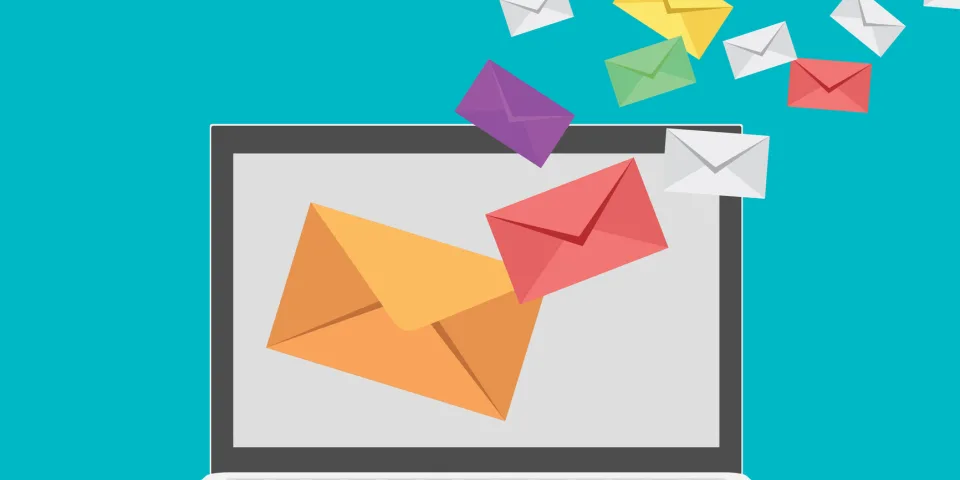Latest 
 Career Development Denise Alexander
Career Development Denise Alexander
Recent Blog Posts


Let’s face it, as a student or working professional, our email inbox can easily control our day. Whether it is spent reading emails or catching up on your responses, the Harvard Business Review says working professionals spend 28% of their day in that inbox.
Since so much time is spent around our emails, here are seven email etiquette rules that you should follow:
Even though you may be writing a private email message to one of your co-workers about a project, you should write your email like everyone will read it. You should avoid discussing highly sensitive and confidential information over email. Even though the person you are emailing may be trustworthy, emails can be hacked, or accidentally sent to someone else.
Additionally, sometimes your email IS forwarded to others intentionally. The intentions may not be nefarious, but they need to catch someone up on a project or include someone in an email chain. You ultimately don’t know where your written word could go, so be careful how you write!
Imagine you are working on a project. You emailed your co-worker on Monday about a project that is due on Friday and you need them to confirm some data. Now it is Thursday and you still haven’t heard back from them. You start to worry and are a little annoyed when you find out they are out of the office. While there was nothing wrong with being out, it would have been nice to know that your co-worker would not be around.
If you are going to be out of the office during regular working hours, it is common courtesy to leave a simple out-of-office response. It allows those who are messaging you to make reasonable accommodations or to find someone else to assist them. Your message does not need to be long or specific; a message like what is below is enough:
I will be out of the office on [date]. I will answer any messages as soon as I can upon my return to the office on [date]. Any urgent messages can be directed to my supervisor who can be reached at [their email address].
If you are like most people, when you are done with work for the day, you want to be done for the day. It isn’t a sign that you don’t like your job; even the most dedicated workers need to take a break sometimes.
While there may be a few extenuating circumstances in which you need to write an email late at night, it is a good business practice to email during working hours. Of course, things like emergencies and time differences can change this, but your peers will appreciate you not emailing on the weekend or coming back to work without a full inbox.
We have all been in email chains about a project or as a department FYI. These group messages are a great way to make sure information is transmitted to a large audience. However, once that initial message is sent out, you can get a wide variety of responses. While the intention is to make communication easier, sometimes people will hit “reply all” and send a message that isn’t intended for everyone.
If your email is intended for a handful of people, it makes more sense to only reply to those individuals. It does not make sense to have everyone read a message that is irrelevant to them. Similarly, you do not need to reply “OK” to everyone. While the sender will be happy that you received their message, the rest of the group could be annoyed to have another message crowding their inbox.
Remember that EVERYONE will read your reply, so be conscientious and sparing when you click that “reply all” button.
I don’t understand.
That is the last thing you want someone to think when they look at your message! Adding a joke, gif or emoji may seem like a great way to lighten the mood or add some levity to the workday, but unfortunately, this can also backfire. This can be purely from a lack of understanding or technological issues.
You may think that the cat hacker emoji makes perfect sense in an email where you say you fixed a technical problem, but your recipient may be very confused. Sometimes computers will also not properly display graphics. Instead of a graphic, your computer may display a question mark or a blank file. You may have to explain what you were trying to do, but it would be a waste of your time.
Include a signature automatically at the end of each email – it's easier to delete it from a message than to add it manually. It also ensures that you don’t accidentally send an email by adding your name!
A professional signature should include your full name, title, company name, company website, and phone number to reach you. You could consider throwing in company LinkedIn and street addresses if those items are relevant to your position or your company mission. It would make things considerably easier for your recipient if they need to get a hold of you later.
Following the previous point, adding too much to your signature can become very confusing. If you add a company telephone number, your number and a fax number, your recipient may be confused about which is your number. Adding your company's social media pages can be a great idea but it may also clutter the bottom of your email.
The goal of your signature is to make things clearer and more accessible. If your signature is a place where you dump a collection of information, then chances are then your signature is not as accessible as you think.
Email is how more and more people communicate and is the foundation for much strong business and professional relationships. By following these commonsense strategies, you can be sure that you aren’t communicating in an off-putting way, but as someone people want to stay in touch with!
BLS pay estimates calculate the median annual wage for various occupations. Per the BLS the median wage for an occupation is: "The wage at which half of the workers in the occupation earned more than that amount, and half earned less. Median wage data are from the BLS Occupational Employment and Wage Statistics survey." Bureau of Labor Statistics (BLS), U.S. Department of Labor, Occupational Outlook Handbook 2024. BLS median wage estimates do not represent entry-level wages and/or salaries. Multiple factors, including prior experience, age, geographic market in which you want to work, and degree level and field, will affect career outcomes, including starting salary and earnings as an experienced employee. Herzing neither represents that its graduates will earn the median salaries calculated by BLS for a particular job nor guarantees that graduation from its program will result in a job, promotion, particular wage or salary, or other career growth.
Get the latest news you need to know, from study hacks to interview tips to career advancement. Have it delivered right to your inbox biweekly.